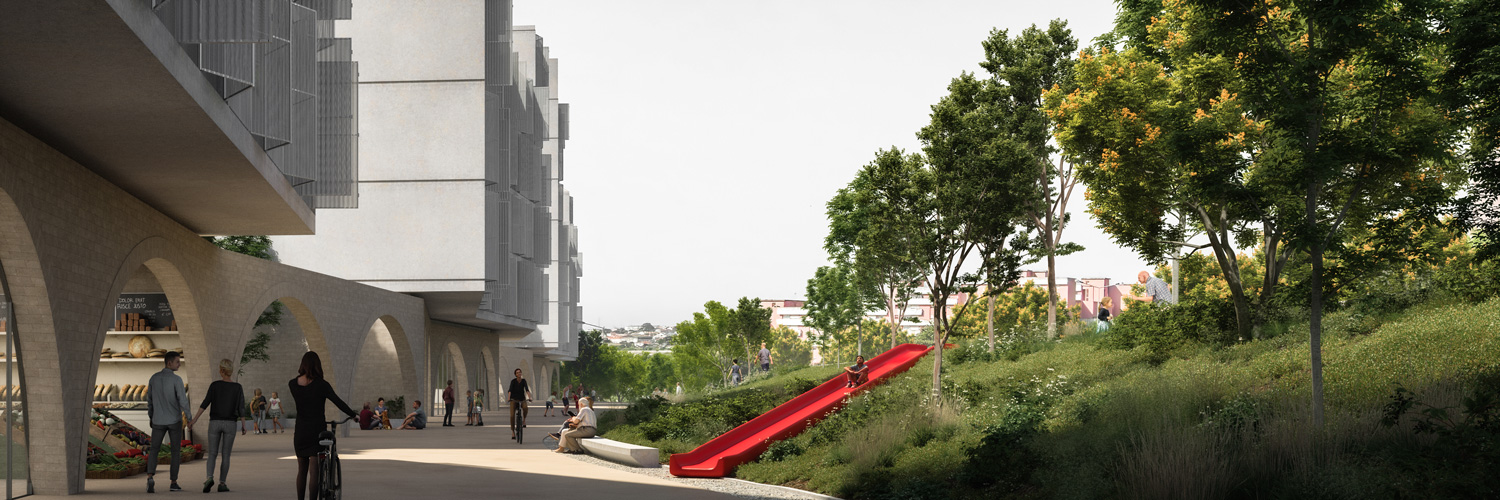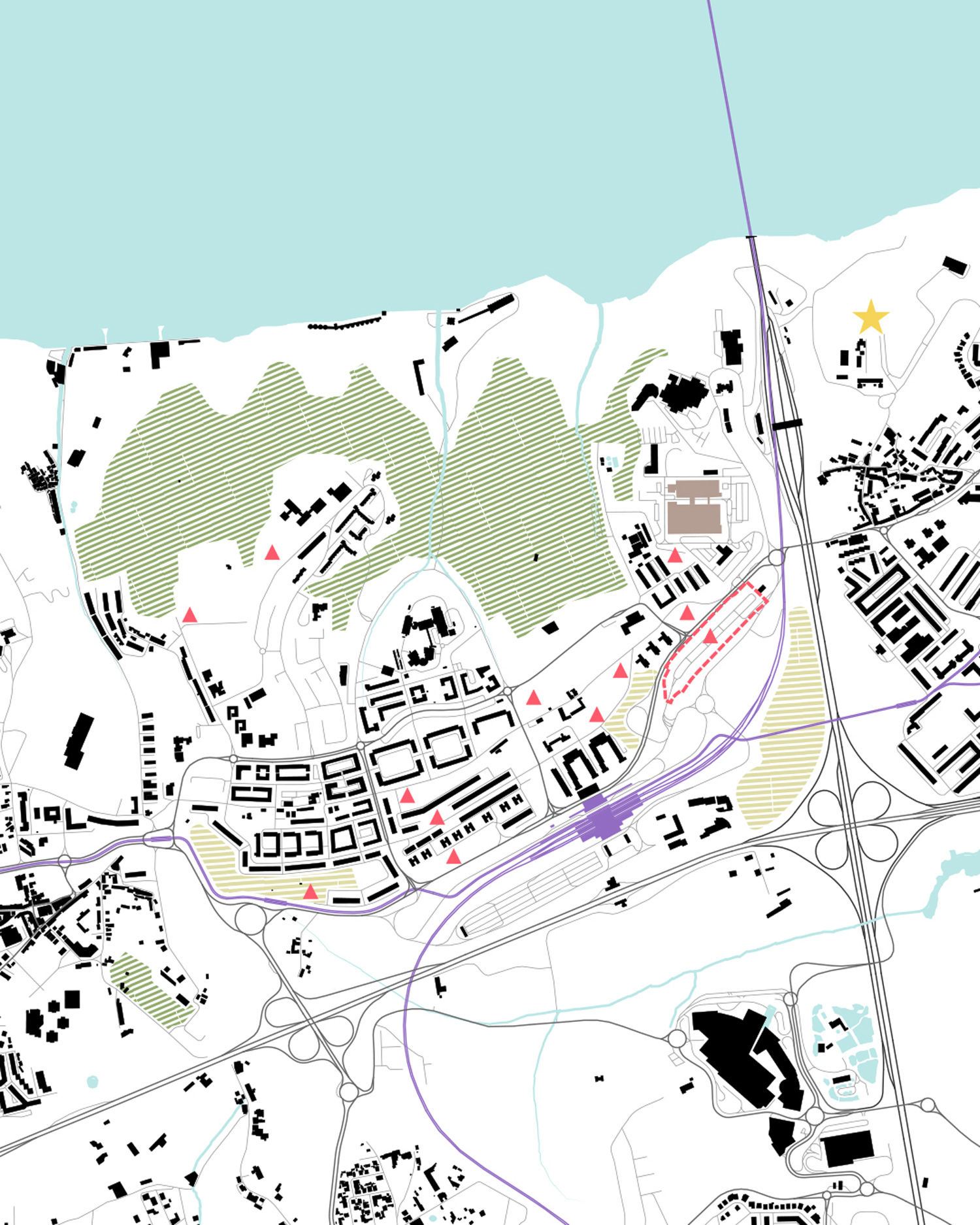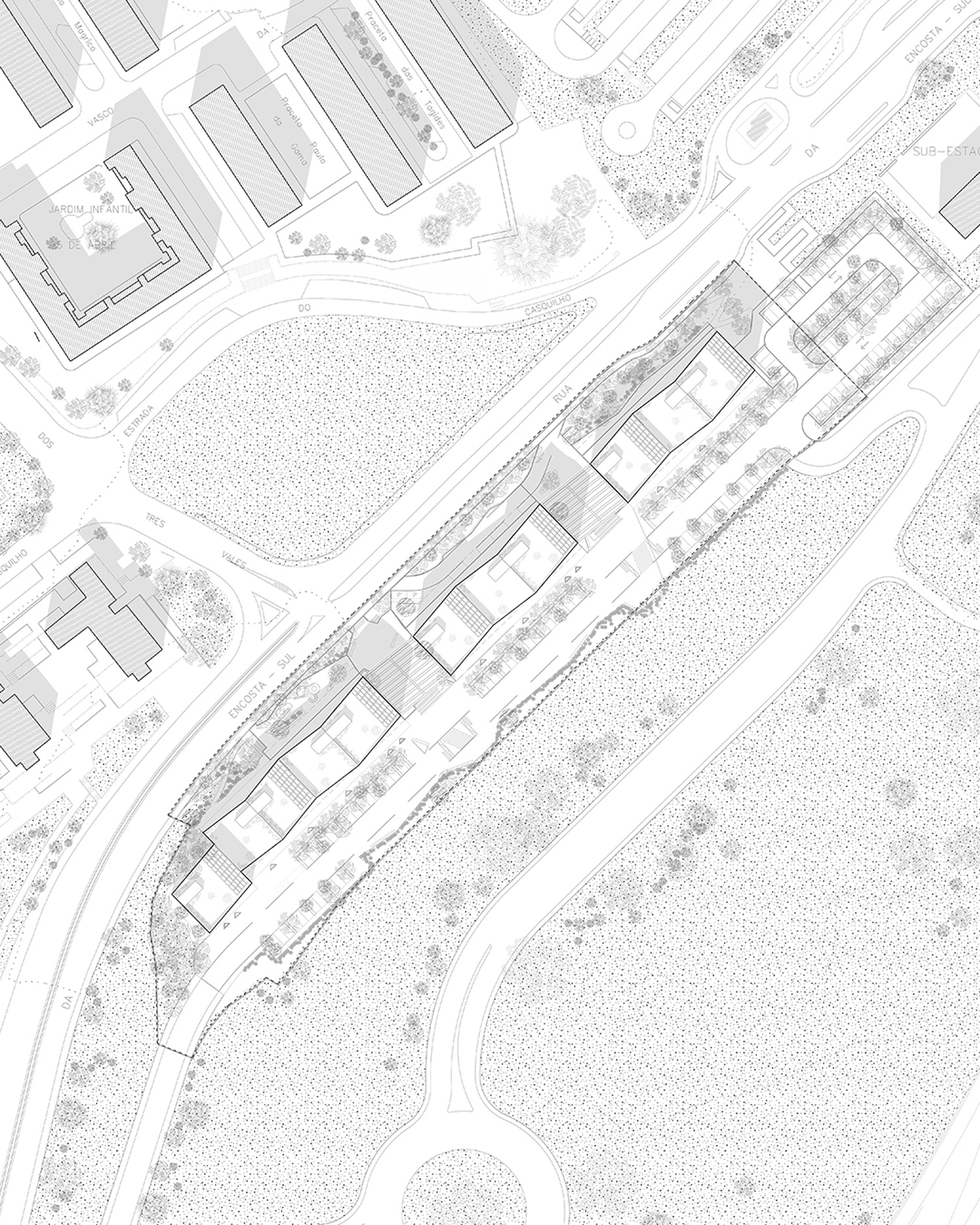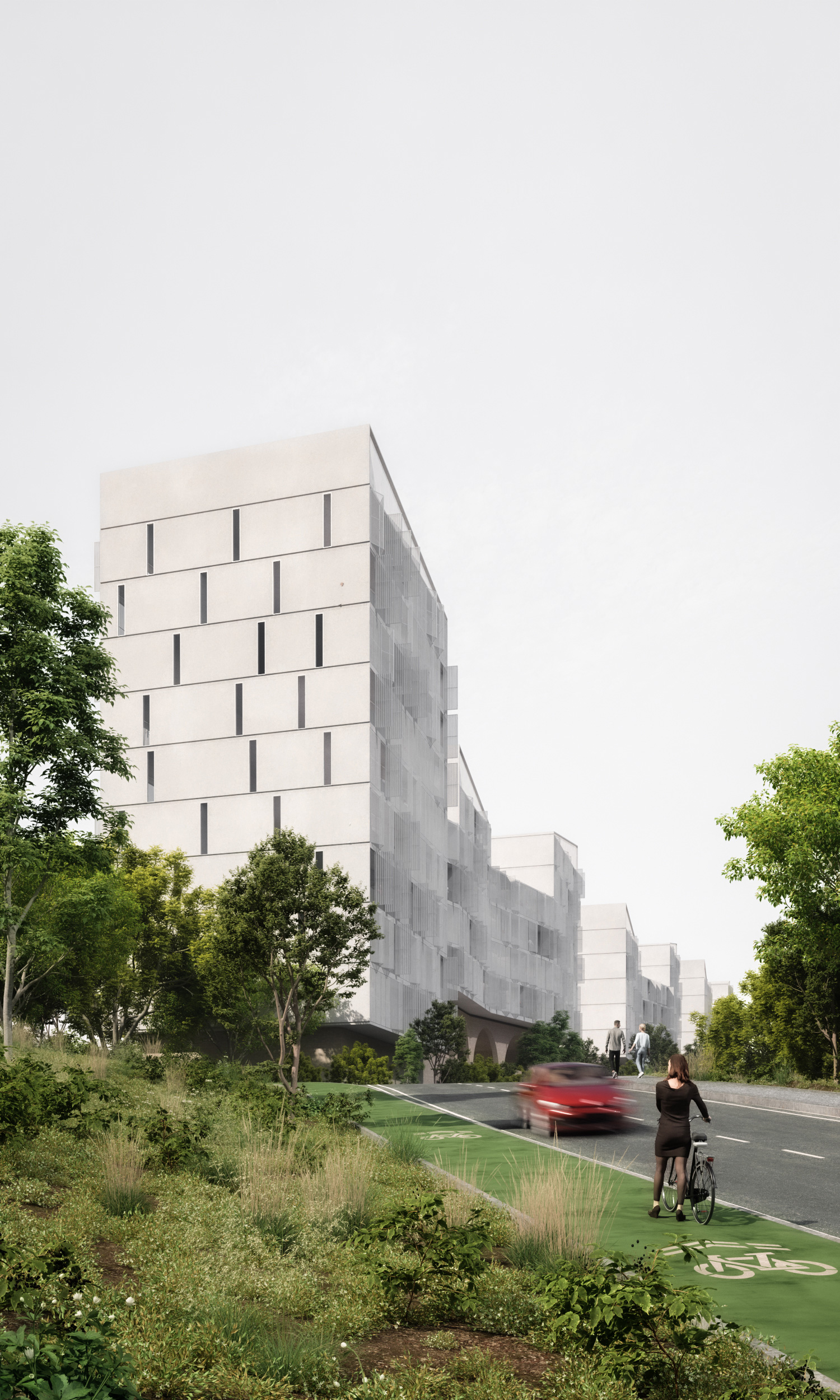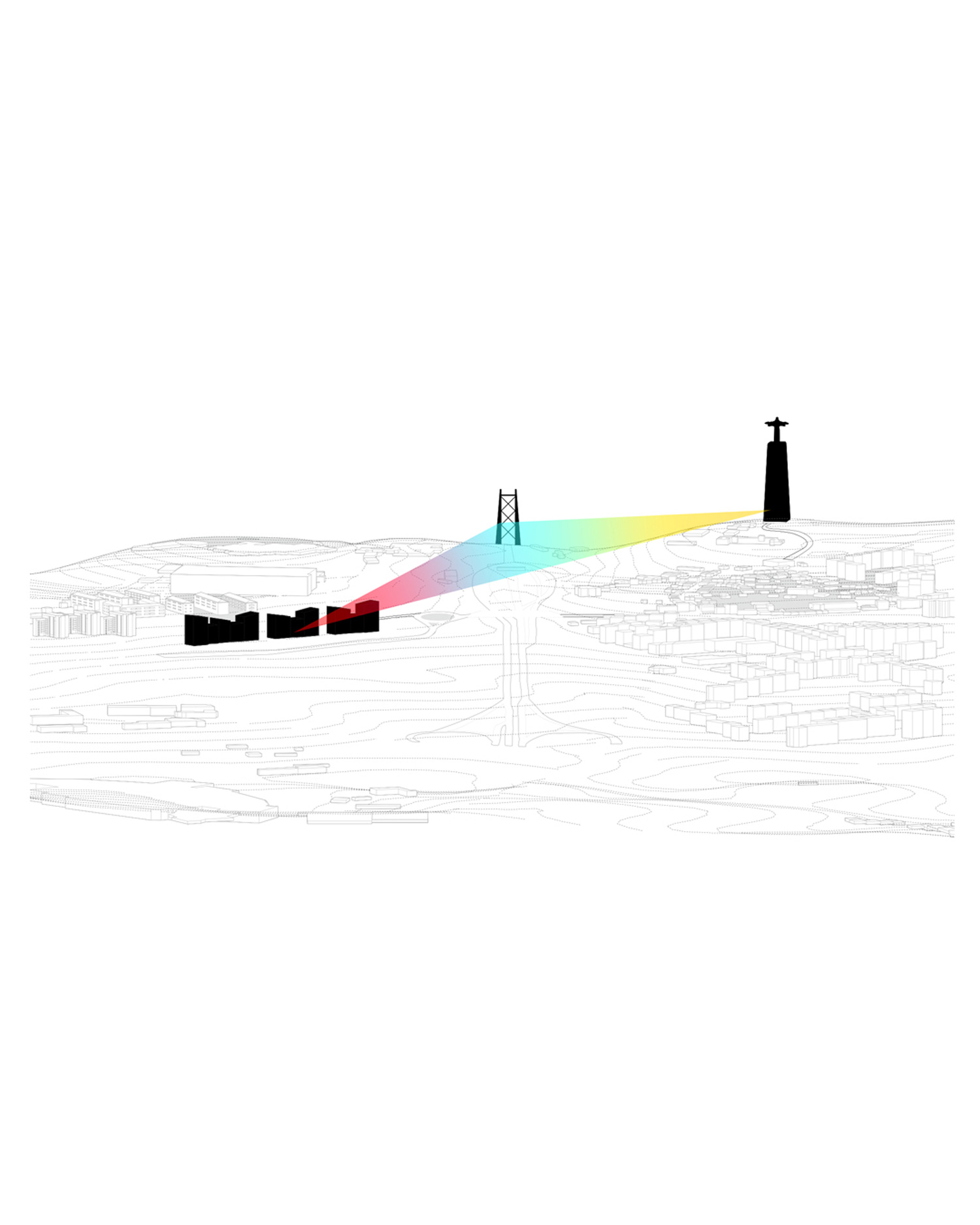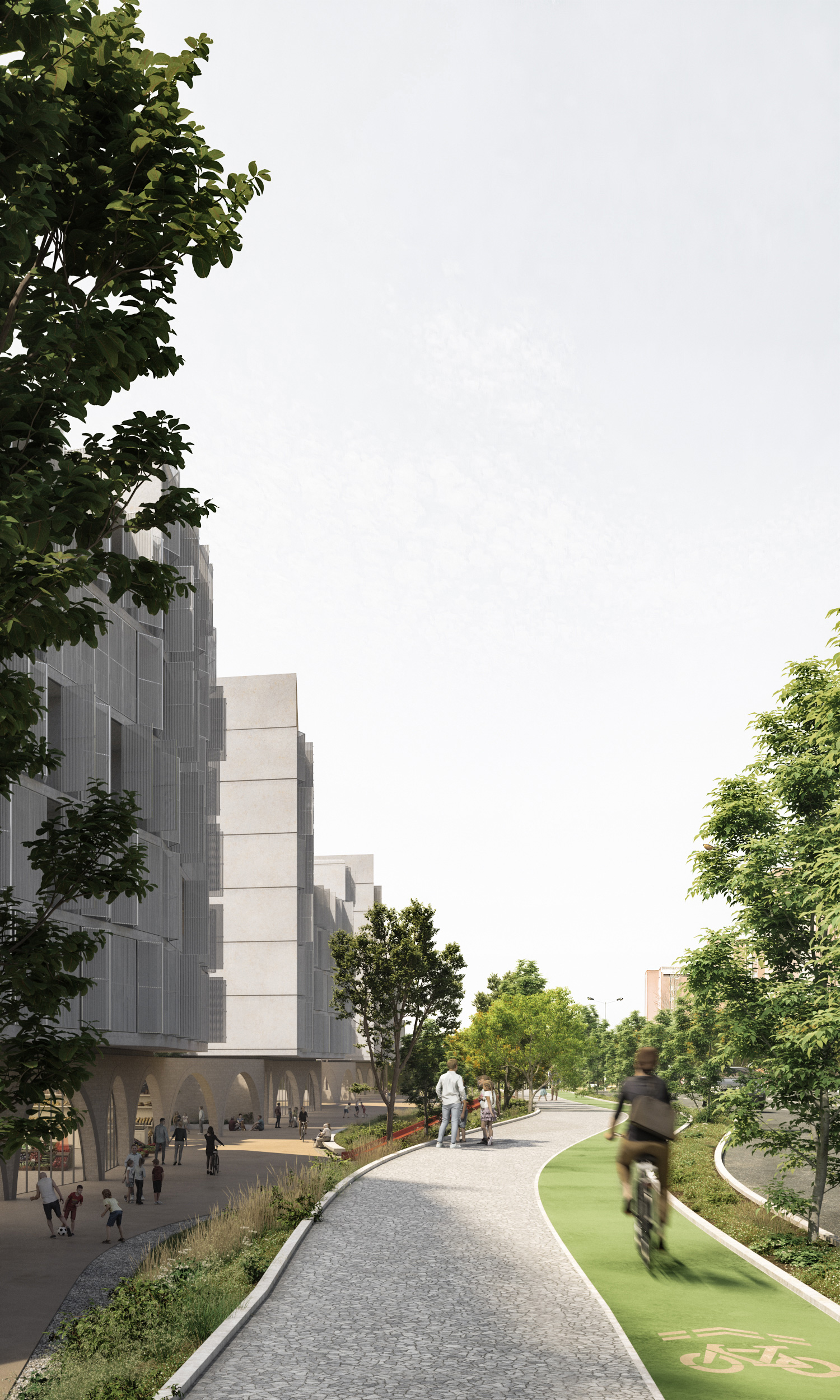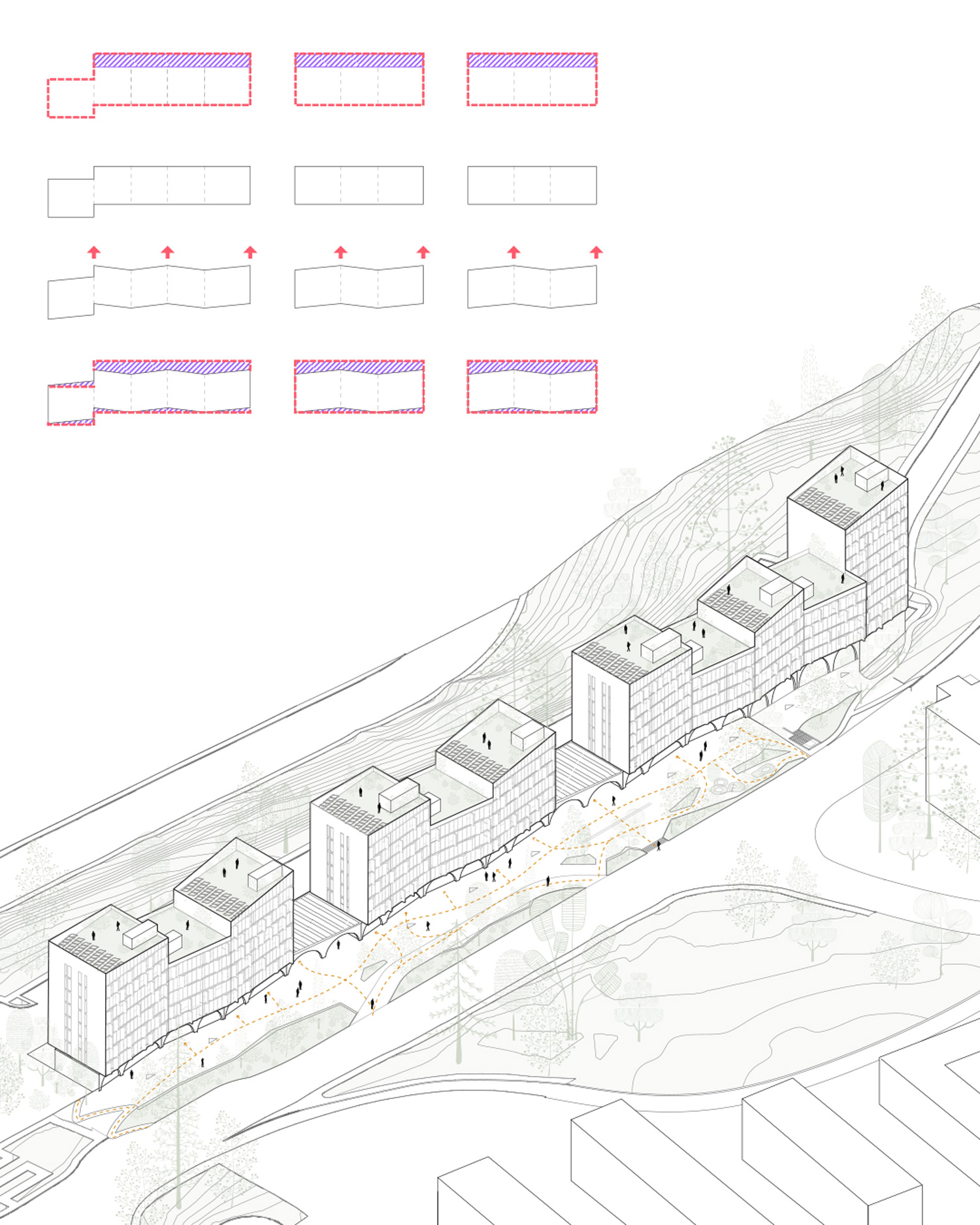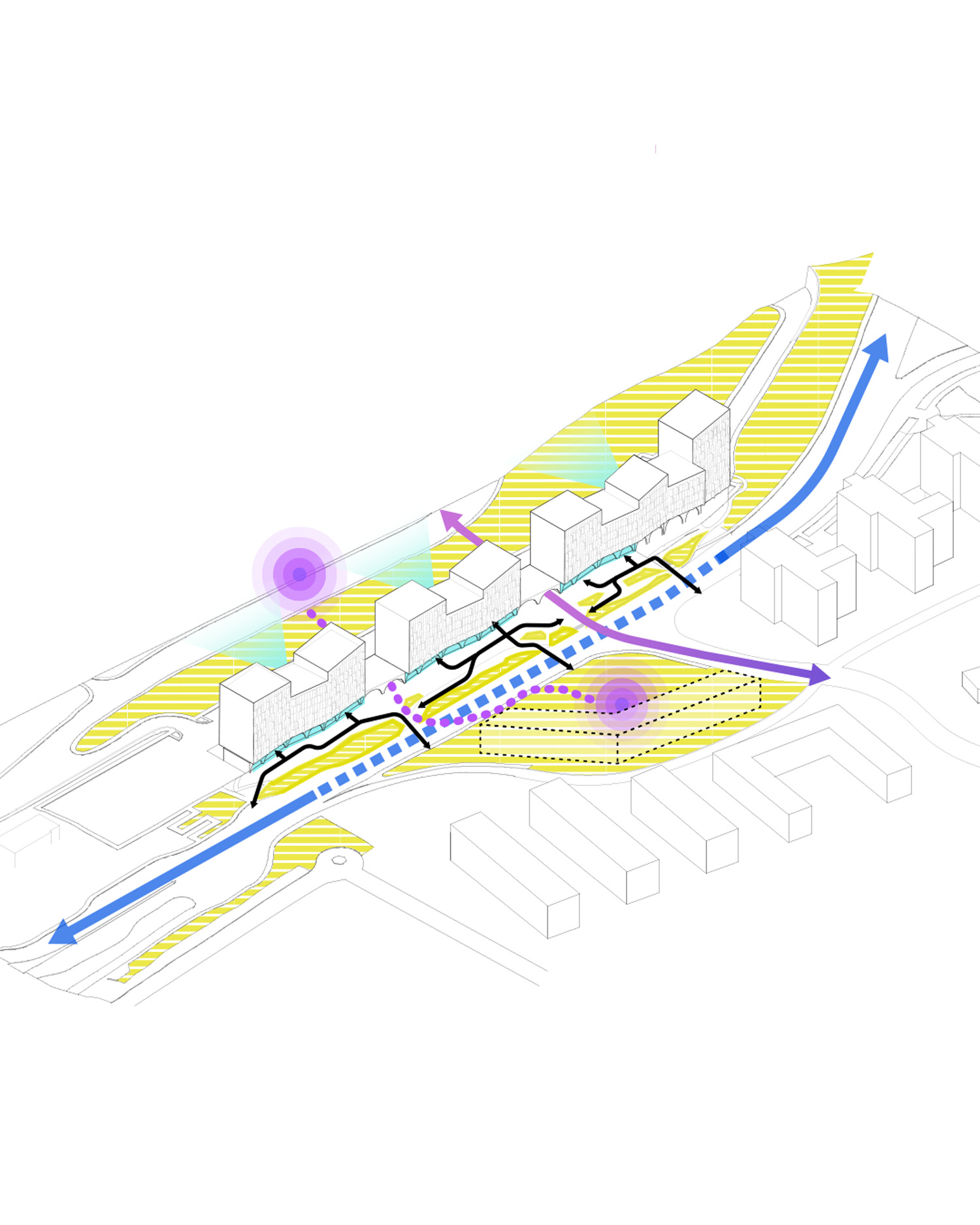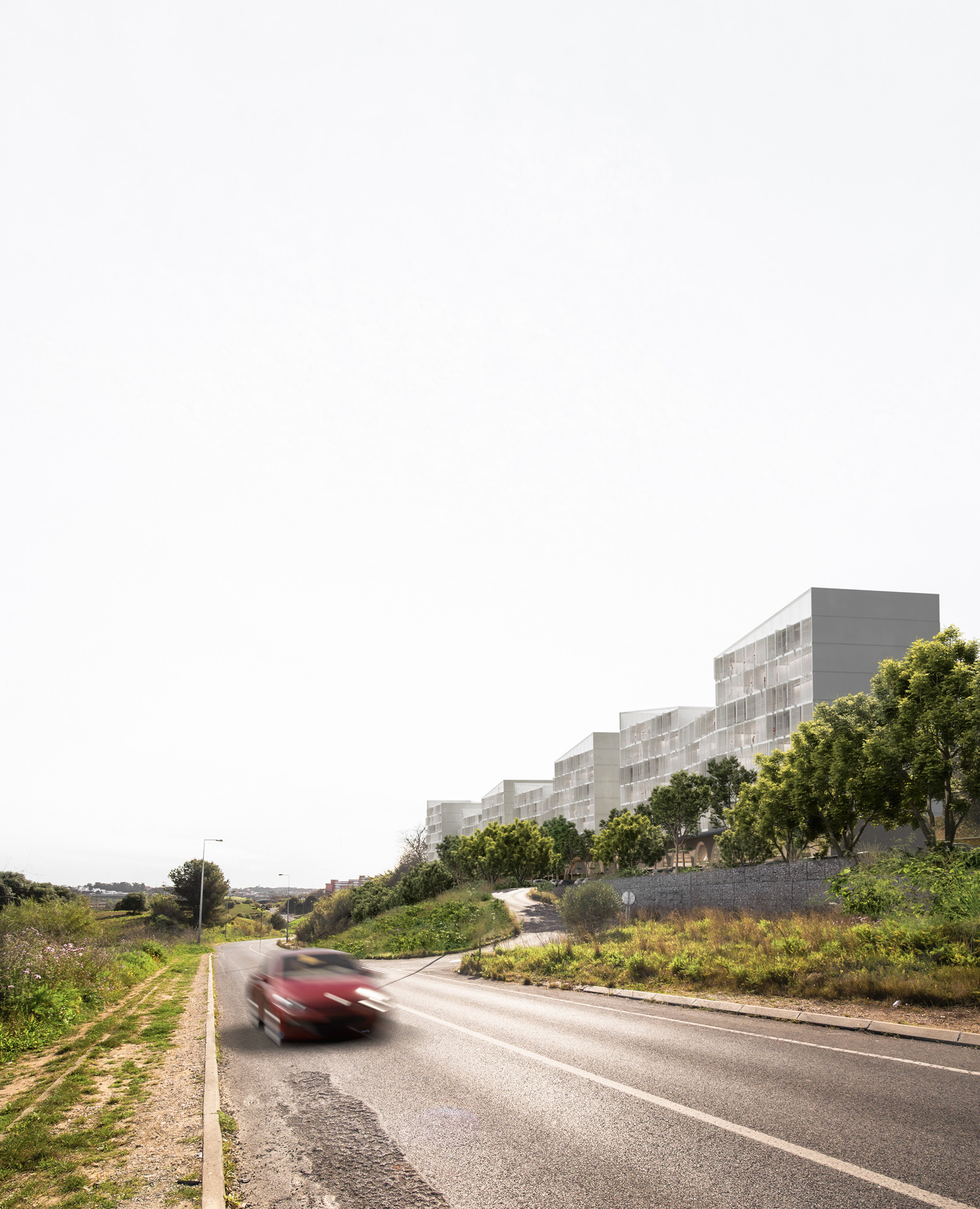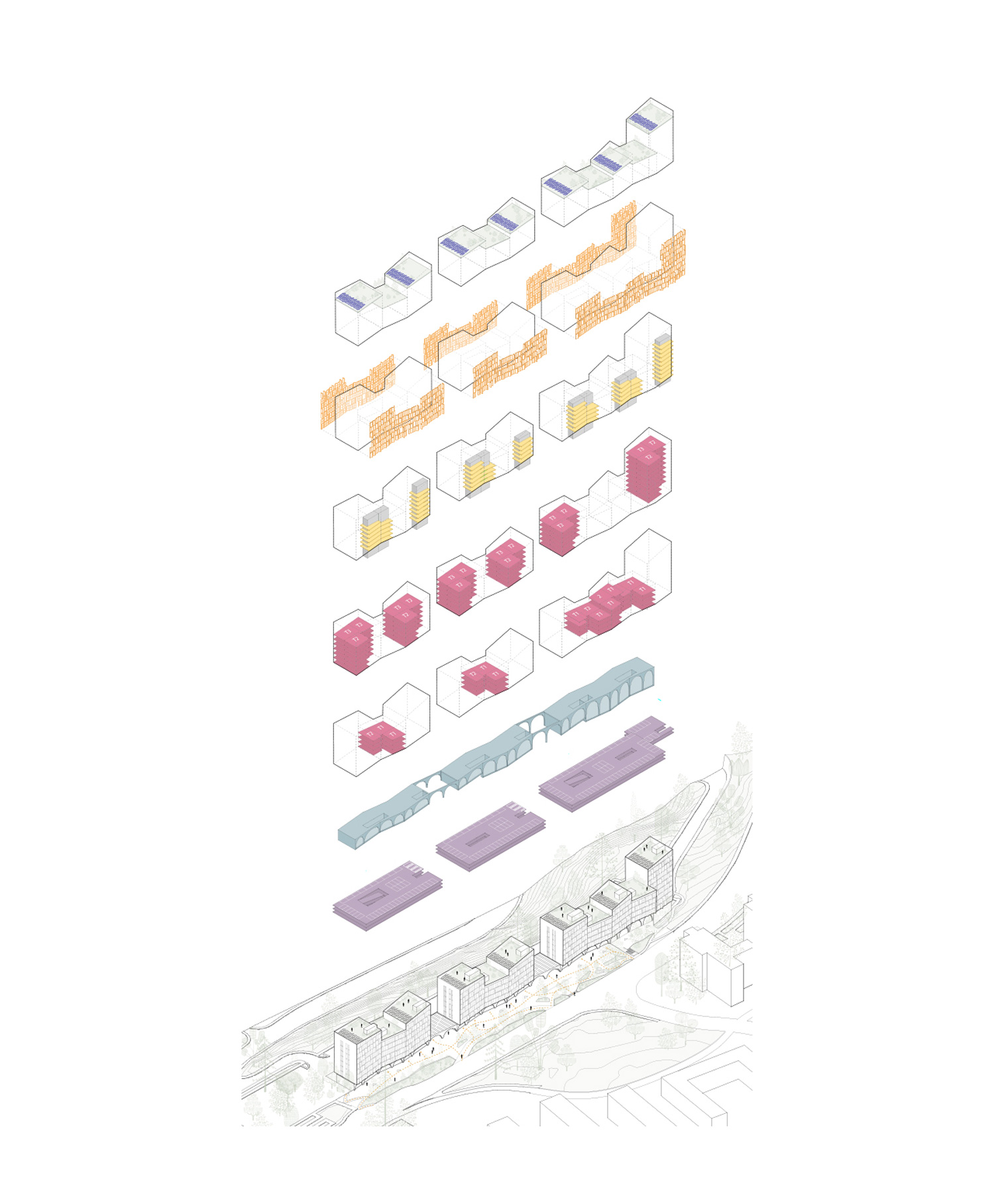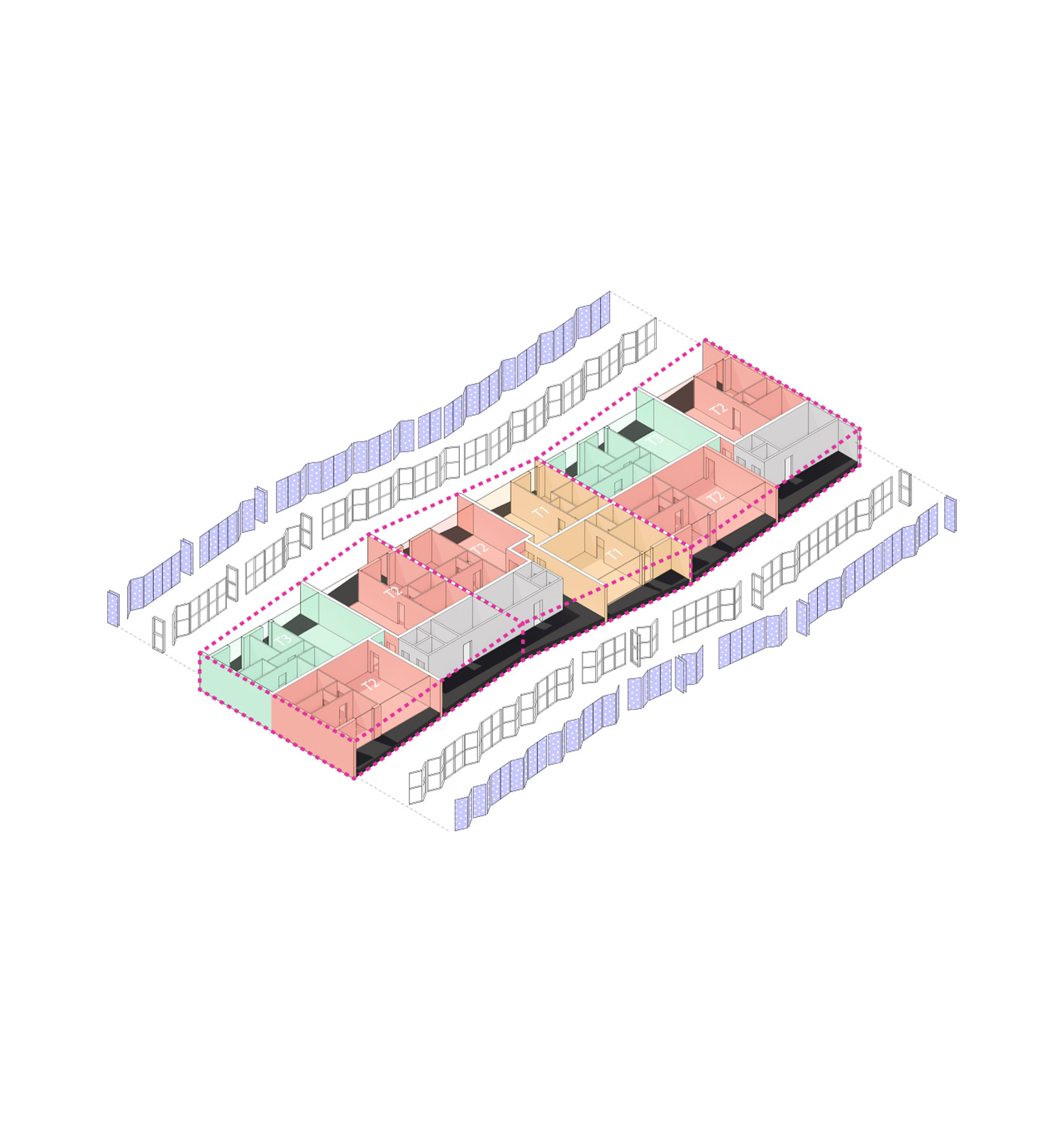☉ 180 Social Housing Units in Almada is a finalist competition entry by Carlos Peraita Riccardo Gialloreto and Claudio C. Araya Arias for IHRU Instituto da Habitação e da Reabilitação Urbana, I.P. in 2023. It is located in Lisboa Portugal in an urban setting. Its scale is large with a surface of 16.780 sqm. Key materials are metal and concrete.
Arriving in Lisbon from the south via Almada is a significant experience. Firstly, the view of Christ the King gives meaning and orientation and serves as an icon for the city and the country. Secondly, the River Tagus, the city’s main waterway and an essential element of its identity, crossed by the 25 April Bridge. The bridge has become an iconic symbol of Lisbon’s cultural identity, representing the city’s modernisation and progress.
Thirdly, Almada’s landscape, characterised by a mix of residential and industrial areas, with a unique topography of hills and valleys. This topography gives rise to a third welcoming icon on arrival in Lisbon: the symbol of the people. In an initial analysis for the development of this project, the following constraints and qualities were detected for the definition of this urban planning proposal:
– Difficulty in adapting the different blocks to the topography, namely the steep slope that Avenida Torrado da Silva presents.
– The orientation of the plot allows for the longitudinal layout of the façades: south-east and north-west, allowing for good natural light for all the flats. The dwellings are adapted according to their location so as not to compromise the healthiness of each one.
– There is a clear distinction between the various levels that transition from public to private and from urban to landscape, and their transition is smooth and made through dynamic spaces.
– The location of the plot and its relationship with the urban fabric gives it the condition of being both a boundary and a filter between the built and unbuilt environments.
Analysing the strategy of the Almada Ponte Housing Project and the different plots destined for social housing that make it up, we see the challenge posed by this competition as a singular one, since it is located on the edge of the hill, but also a structural one, since it gives a new configuration to the avenue by connecting directly with another of the planned social developments. In front of this other development, a courtyard is planned that relates directly to the one situated between plots 2 and 3. In addition, R. 3 Vales, perpendicular to the plot, merges with the space situated between plots 1 and 2, opening up visually to the vast sloping landscape.
The landscaping around the social housing building would be a model of sustainable and environmentally conscious design. This would provide a healthy and attractive living environment for the residents, while contributing to the health and well-being of the community in general. The project incorporates sustainable drainage systems, naturalised car parking and a children’s playground made from soil levels and natural materials, creating a harmonious and sustainable environment for its inhabitants. Access to the apartments from the building by car is on the lower level of the east façade where users can also park their bicycles, while access to the commercial ground floor is via the west façade, which is accommodated for pedestrians and loading services.
There are communal spaces attached to the cores that welcome users into the surrounding landscape every time they arrive or leave the building, with generous dimensions that can house communal activities. The outer layer of the façade serves as a sunlight filter protecting the terraces on both façades. Solar panels are installed on the roof to utilise clean energy.
The longitudinal proportion of the buildings and their NW-SE orientation mean that two façades are differentiated, both in terms of orientation, use and relationship with the environment. The NW façade and the SE façade therefore function in different ways, presenting different elements, cores and common spaces for the avenue and longitudinal private terraces in relation to the landscape. The rhythm of the diagonal terraces allows slightly different glimpses of the variety of interesting landscape elements that the terrain contemplates.
The structure is made up of reinforced concrete elements, with slabs that have solid and lightened zones, reducing their own weight and the cost of construction. The slabs are supported by columns in the inner solid zones and by porticoes in the peripheral solid zones. These frames help the building resist horizontal actions, particularly seismic action, and also control the deformation of the cantilevered slabs. The façade is made up of thermal insulated thermal blocks on the outside and corrugated white aluminium sheeting.
These materials are low-maintenance and long-lasting, contributing to the economic viability of the project. The infrastructures of the other specialities, namely the water and sewage network and ventilation, are concentrated in vertical plumb lines in order to ensure the smallest possible piping distances. The external aluminium window frames are all the same size and are repeated on all floors. The typologies were also designed to encourage repetition and modularity, particularly in the bathrooms and kitchens, in order to promote the constructive and financial efficiency of the project.
